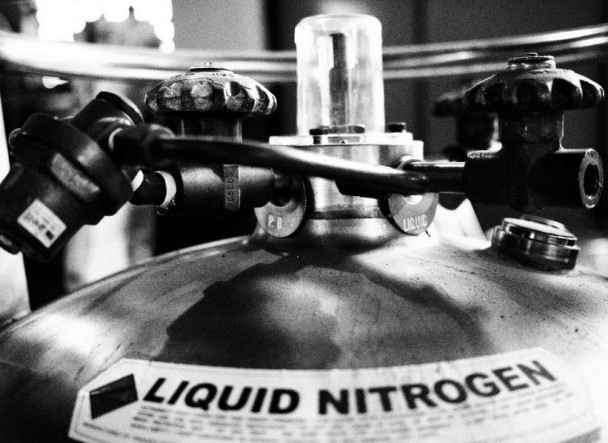Handling nitrogen safely can only be accomplished by becoming familiar with the potential hazards that come along with it. Knowing the characteristics of liquid nitrogen is essential to properly handling the substance without risk of harm. If your employees are required to work with nitrogen at your place of business, it is important to keep these safety standards in mind at all times.
Liquid Nitrogen Is Dangerously Cold
Most people handling the substance are familiar with the fact that it is exceptionally cold, but they may not realize how extreme it is in this regard. Liquid nitrogen is so cold its boiling point is -320°F (-196° C). The substance vaporizes quickly and even its gas can be cold enough to damage human tissue. This means that proper safety gear should be used at all times. Long pants and long sleeves should be worn at all times as well as safety goggles and gloves.
Contact May Lead to Immediate Injury
Contact with nitrogen in its liquid state or immediately after vaporization can cause freezing injuries. Hands should be protected with gloves specialized for handling extremely cold substances. In its gaseous state, nitrogen may come in contact with the delicate tissue on the surface of the eyes, causing immediate damage.
Touching Objects Cooled with Nitrogen Can Be Hazardous
When nitrogen is spilled on a surface it will cover it completely and cool the area entirely. When objects are cooled rapidly any part of the flesh that is left unprotected may quickly stick to the skin. Attempting to release the skin can lead to tearing of the flesh. It is best to used tongs to remove objects that have been immersed.
Vaporized Nitrogen Can Lead to Sudden Suffocation
As liquid nitrogen evaporates the gas it creates displaces the air in the given space. In closed spaces larger amounts of the gas reduce the concentration of oxygen in the air, possibly leading to asphyxiation. The gas is odorless, colorless and tasteless and cannot be easily distinguished, thus it is breathed in like the remainder of the air. Nitrogen should only be handled in well-ventilated areas.
Nitrogen Dewars Should be Handled Lightly
Liquid nitrogen dewars are one of the main types of liquid nitrogen containers. These containers are made specifically to withstand the rapid temperature changes that occur when working with liquid nitrogen. Rough handling can lead to damage of the dewar as they are designed to be used with very little internal pressure. The opening should be unobstructed and nothing should interfere with the venting of gas. Excessive gas pressure could burst or damage the container.
The easy vaporization and extreme temperature of nitrogen require it to be handled only by those who have an understanding of these characteristics. Failing to understand its properties and theirconsequences can have serious or even fatal effects. If your employees are required to work with nitrogen, it is imperative that you provide them with regular safety training. Be sure to keep updated safety protocol and procedures in a place where all employees have access to them. Also make sure all employees are provided with and use the proper safety gear. Inspections of all equipment involved in handling of nitrogen should be completed on a regular basis. Although working with nitrogen can be hazardous, when proper safety procedures are followed, you can ensure that your employees avoid any serious accidents or harm.
